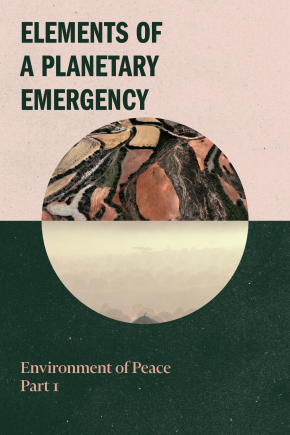Elements of a Planetary Emergency: Environment of Peace (Part 1)
SIPRI’s Environment of Peace initiative focuses on managing the risks that are created by two interwoven crises: the darkening security horizon and the immense pressures being placed on the natural world and the systems that support life on earth.
The Environment of Peace research report is an in-depth look at the evidence base and analysis of the policy report Environment of Peace: Security in a New Era of Risk, including many real-world case studies. The report is the result of two years’ work by more than 30 researchers, led and guided by some of the leading voices in the fields of environment and security.
Accessibly designed, the new research report is available to download in four parts: Elements of a Planetary Emergency (part 1); Security Risks of Environmental Crises (part 2); Navigating a Just and Peaceful Transition (part 3); and Enabling an Environment of Peace (part 4).
This part—Elements of a Planetary Emergency (part 1)—lays out the conceptual and evidential landscape for Environment of Peace. Led by Dan Smith, SIPRI Director, it brings together data on a wide range of indicators, showing that both security and environmental stresses are increasing. These include markers of decline in the natural environment: pollution, climate change, species loss and associated issues. On the security side, part 1 provides data on both ‘hard’ security questions (such as militarization, the collapse of international arms controls and military spending) and on ‘human’ security concerns (such as hunger and development). It considers the failures of governance to address these pressing crises and argues that the health of the global biosphere should be recognized as a core national security interest.
Read a separate annex that assembles a number of in-depth case studies and other input papers that were commissioned to inform the research and analysis in part 1 here.
Read the overview to the four-part research report here.
Read Security Risks of Environmental Crises (part 2), which shows how combinations of environmental and security phenomena are generating complex risks, here.
Read Navigating a Just and Peaceful Transition (part 3), which focuses on needed transitions towards sustainability and climate resilience, here.
Read Enabling an Environment of Peace (part 4), which examines the legal and institutional landscape within which the twin crises—and humanity’s responses to them—play out, here.
Read the policy report Environment of Peace: Security in a New Era of Risk here.

